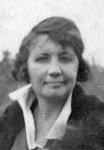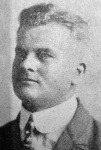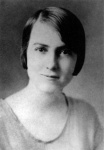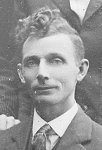HISTORY OF PASCO COUNTYEarly Residents of Pasco CountyA | B | C | D | E | F | G | H | I | J | K | L | M | N | O | P | Q | R | S | T | U | V | W | X | Y | ZThis page was last revised on May 26, 2020. SOUTHWICK B. DAVIS (1844-1927) first visited what would become New Port Richey in the spring of 1914 and moved here in November 1914. His wife died in 1919. He married Mrs. Harriet Calkins of Chicago in 1922; they had not met in person until one hour before the wedding but had corresponded for several months. [See an article by him in the Genesis of New Port Richey.] BENNER DAVIS (1873-1943) was a farmer who lived at Prospect. He was born in San Antonio on Aug. 24, 1873, the son of Samuel Washington Davis and Mary Davis. He was married to Mrs. Alice E. Davis. Children included Mrs. Francis Smelt of Tampa and Mrs. Theo Dawson, Mrs. Rebecca Hancock, and Miss Iantha Davis of Dade City. BYRL EDWARD WALLACE DAWKINS (died, 1953) is shown as a 37-year-old black farmer in Ehren in the 1920 census. He married Mary Hawkins, who is shown in the census as 27 years old. The following article, by Lori B. Cunningham, appeared in the Tampa Tribune on Feb. 15, 1991, which the newspaper reported was Mary’s 100th birthday.
GEORGE W. DAYTON (1866-1944) was admitted to the bar in Florida in 1895 and practiced law in Dade City until 1912. He was a member of the Florida State Senate in the sessions of 1909 and 1911. In 1912 he returned to Texas where he had lived earlier. He practiced law again in Dade City from 1927 to 1933, when he returned to Texas. He was born in Hancock, County, Ill., and was buried in Valley View, Tex. A brother was O. L. Dayton of Dade City, q.v. Judge ORVILLE LIMBAUGH DAYTON (1878-1963) was born in Valley View, Texas, on a ranch on July 29, 1878. He recalled, “Our house had neither doors nor floors, and we had to borrow a big Newfoundland dog from the nearest neighbor to keep the wolves away at night. This neighbor was 15 miles away and the nearest railroad was a long walk of 75 miles.” He came to Dade City in 1890. He graduated from Pasco High School and attended Hartwell Institute in Hartwell, Ga., and then entered the law office of his brother G. W. Dayton. He first won election as a Pasco County judge in May 1899, two months before his 21st birthday. He was installed the following January after reaching the required age of 21. After serving as county judge for four years he became clerk of Pasco County court for a short time, and then became prosecuting attorney of the county court. He then became a county judge again from 1914 to June 30, 1927, when he was appointed circuit judge to fill a newly created seat in the Sixth district. He retired from that position in 1933 to enter private practice. Dayton also served as mayor of Dade City. His brothers were G. W. of Dade City, q.v.; A. C. of St. Petersburg; F. H. and J. E., who both stayed in Texas. Orville L. Dayton died in Tampa on April 14, 1963. Children:
AGNES DEAL (1924-2006) served on the Pasco County School Board from 1974 to 1990. She spent 30 years as a registered nurse and taught at Pasco High School. She was born on Jan. 17, 1924, in Alabama, and moved to Florida in 1953 from Mississippi and settled in Dade City in 1954. She died on Nov. 11, 2006. ANGELO DECUBELLIS (1864-1950) was an early settler who came here about 1913. He was born in Montreal. A brother, Janvier (January) came about the same time, and another brother, Pierre (Peter) arrived several years later. JANVIER (JANUARY) DECUBELLIS (age 63 in the 1930 census) and his wife Rosina (age 46 in the 1930 census) were early settlers who came here about 1913. The 1930 census shows children George J., 27, Anthony, 19, and Ralph, 5. Their 15-month-old child Henry wandered into a pond behind their home east of New Port Richey and drowned in a tragic accident in 1924. Ralph DeCubellis died in World War II on Saipan in June 1945. Janvier was born in Italy; his wife was born in Canada. Janvier died in 1949 in Gadsden County, Florida.
In a 2003 interview, David DeCubellis (died in 2004 at age 80) said that he was the road and bridge superintendent for the county from 1960 to 1985. “The first road I helped build was Nebraska Avenue. It was an old dirt road and we built it up. I paved the part of [State Road] 52 that goes from Bellamy Brothers Boulevard to Dade City.” He also stated that he named DeCubellis Road for his family. “We raised everything we ate on that 60-acre farm. We had pigs, turkeys, chickens, cows and ducks. There were 350 head of cattle and 500 hogs. We grew all kinds of vegetables and had sugar cane that we made syrup from. And an orange grove.” JAMES A. DELCHER (1837-1900?). The following is taken from Memoirs of Florida (1902):
On May 19, 1922, the Dade City Banner reported that the body of Mr. Delcher was moved from the Dade City Cemetery to Jacksonville, the present home of his mother. The article reported that he had died 22 years ago and that he had built the first hotel in Dade City on the site of the Edwinola. HARRY S. DELCHER (died, May 8, 1927), a son of James A. Delcher, was a well-known merchant in Tampa. He began as a clerk in the Coleman and Ferguson grocery store in Dade City before moving to Tampa.
Frances J. Thornton was born Feb. 7, 1884, in New Jersey but grew up Brooklyn. She married five times. Her first husband was Edward Goate; his father, William Bloomfield Goate (1848-1934), taught music at Gulf High School in the late 1920s and early 1930s. Bonnie Tobias writes:
Her second husband was Richard Ravenhall. She purchased the property for the Sally Shoppe and her nearby home while married to him and she retained the properties at their divorce. In 1927 she married Daniel R. Demarest. She died in October 1964. The Sally Shoppe was named for daughter Sally Goate (1905-1960). Sally married J. Clinton Lockard in 1930. Sally’s daughter was Jane “Judy” Frances Lockard (married name: Gurnow). Judy was born in Tarpon Springs on Sept. 18, 1934, and graduated from Gulf High School in 1953. In the 1940s Sally married Ray Huddleston. ROBERT HENRY DE MERRITT (1858-1935) is described as a pioneer resident of Elfers in his obituary. The 1900 census shows him living in the Anclote precinct with his wife Sarah, daughter Julia, stepdaughter Mary Baker, and stepson Charles Baker.
ADAM DICK (1860-1942) was a blacksmith who came to San Antonio about 1890. He moved to Dade City around 1922. He was also the janitor of the courthouse. He was born in New Albany, Ind. One of his children was John F. Dick of Trilby. WILLIAM HENRY DINGUS, SR. (1890-1959) in 1927 formed a partnership with Frank I. Grey for the sale of real estate. The partnership lasted until just before Grey’s death in 1956. Dingus was born in Floral City, Fla. He was living in Aripeka in 1918 when he entered the Army. He delivered the mail in Aripeka. Dingus moved to New Port Richey in the 1920s. HENRY CLAY “H. C.” DOUGLAS, JR., (1921-2010) was born Feb. 20, 1921, in Dora, Ala. His parents were Annie Maye Hodges and H. C. Douglas Sr., of Land O’ Lakes. Henry’s love of flying led him to join the U.S. Army Air Corps while in his early twenties. Based in Framilingliam, England, he flew B-17 bombers, completing 30 combat missions in the European Theater. As a lieutenant in the 390th Bombardment Group and Eighth Air Force, Henry was awarded the Distinguished Flying Cross, the Air Medal, followed by three additional oak leaf clusters to Air Medal, and additional citations for exceptional performance under heavy enemy fire. Upon returning home and while awaiting college admissions, Henry became a flight instructor at Zephyrhills Municipal Airport, which had served as the 10th Fighter Squadron base during the war. It was then that he met Christine Krusen, his wife of 63 years. She was taking flight lessons as a birthday gift from her parents and Henry was her instructor. They married August 7, 1947, became graduates of the University of Florida and returned to Zephyrhills, where Henry “Doug” joined Christine’s parents, I.A. (Andrew) and Dorothy Barron Krusen, as an integral part of the promotion and further development of Krusen Grove and Cattle Co. (later becoming K-Bar Ranch) which the Krusens pioneered in the 1930s. K-Bar Ranch was well known for breeding award-winning Charolais, Charbray, and Brahma cattle for many decades. Henry’s love of agriculture and his ranching career spanned over 60 years, where he served as president of the Florida Cattleman’s Association, president of the National Charolais Association, president of the American International Charolais Association, and numerous agricultural boards and councils affiliated with the University of Florida. He also served on the Zephyrhills City Council for 10 years, the Board of Directors of SunBank, and was active in the Rotary Club. He was a member of the First United Methodist Church in Zephyrhills. Douglas died on Nov. 9, 2010, at Zephyrhills. He and his wife Christine were members of the ZHS Class of 1944. Their daughters are Susanne Miller (ZHS ’69) of Tallahassee, Jennifer Blackburn (ZHS ’71) of Clarkesville, Ga., and Andra Douglas (ZHS ’77) of New York City. [Information from his obituary in the Tampa Tribune and from Clereen Morrill Brunty.]
Judge EDMUND F. DUNNE (1835-1904) was born in Little Falls, New York. He went to California in 1852 where he was elected to the California legislature in 1862. In 1864 he served on the constitutional convention for the new state of Nevada and later served eight terms as a member of the Nevada judiciary. In 1874 President Grant appointed him chief justice of the Arizona Territory. Dunne’s legal position that Catholics and other religious groups should receive tax funding for their schools caused President Grant to force his resignation. According to a biography in Great Floridians 2000, after his removal, Dunne was hired by Hamilton Disston, a wealthy Philadelphia saw manufacturer, to select lands in a four million-acre purchase Disston had made in Florida, and in 1881, Dunne was given 50,000 acres of land to begin the Catholic colony of San Antonio. However, according to an account in Dunne People and Places by Joe Dunne, in 1882 Edmund Dunne purchased 50,000 acres of land in through the assistance of his brother John, who was the attorney for the Disston Company and controlled large tracts of land in Florida. Eddie Herrmann suggests that Dunne may have had rights to the land but did not own it. Dunne explained the procedure to a reporter for the Baltimore Catholic Mirror in 1885:
On February 15, 1882, he selected the colony’s site in Pasco County. In 1889, Judge Dunne conveyed his own lands to the order of St. Benedict and a small party of monks led by Father Charles Mohr, O. S. B., arrived to establish a monastery and Catholic school and to found the town of St. Leo. On Aug. 17, 1899, the San Antonio Herald reported, “Hon. E. F. Dunne, the eminent jurist and founder of San Antonio, has left Jacksonville and taken up his residence in Baltimore.” The information in this paragraph was taken from Dunne People and Places by Joe Dunne. Details of Dunne’s early education are not available, but as an adult he could speak several languages and had an expert knowledge of history and theology. In 1874 Dunne visited his friends and relatives in Uí Riagáin on his way back to America from a law case he was dealing with in London. He is said to have verified that his father was “the legitimate legal heir of Iregan and chief of the tribe” during this visit. The Genealogical Office in Dublin do not have a record of this pedigree so Judge Dunne may have only received verbal agreement from Irish historians of the day. Pope Pius IX created him a Knight of the Order of St. Gregory the Great in 1876 and in 1879 he received a brief from Pope Leo XIII raising him to the rank of Commander of that Order. At the St. Patrick’s day celebration at Fort Wayne, Indiana, Dunne 1881 he delivered a famous Land League Lecture which was later adopted and published by the State Land League of Illinois. He established the Catholic colony at San Antonio in pursuance of a project he had previously submitted to Pope Pius IX. The Pope had studied the project in detail as presented by Cardinal Berardi and declared that “I bless this plan and the author of it and will pray for his success.” He remained in the colony until 1889 establishing there four Catholic churches, several schools, a convent boarding school for girls and St. Leo’s Military College for young men. In recognition of his work for the Catholic Education system, in January 1884 Pope Leo XIII granted him and his descendants in the male line in primogeniture the title Papal Count. In memory of his roots he took the title Count d’Oriagan. He was one of the most noted Catholic laymen in the U.S.A. and was also one of the finest orators of his day. Dunne married Josephine Warner, daughter of Col. Francis Warner of Vicksburg, Mississippi, in Paris in October 1872. Their children were Maria del Carmen, Eugene Antonio, Hilda, Brian Baru, and Mary Eithne. |

 PIERRE (PETER) DECUBELLIS (1875-1972) migrated with his wife Frances (1886-1964) and
five children to Florida from Montreal in 1919 or 1918. Four more children were born in Florida.
They came to Florida for the warm weather because Frances suffered from bronchitis.
Pierre and Frances were born in Italy.
They had ten children, one of whom died as a baby and is apparently not listed here:
PIERRE (PETER) DECUBELLIS (1875-1972) migrated with his wife Frances (1886-1964) and
five children to Florida from Montreal in 1919 or 1918. Four more children were born in Florida.
They came to Florida for the warm weather because Frances suffered from bronchitis.
Pierre and Frances were born in Italy.
They had ten children, one of whom died as a baby and is apparently not listed here: Mrs. FRANCES “BONNIE” DEMAREST (1884-1964) operated the Sally Shoppe on the Boulevard in the 1920s and 1930s.
On Aug. 30, 1929, the New Port Richey Press reported:
Mrs. FRANCES “BONNIE” DEMAREST (1884-1964) operated the Sally Shoppe on the Boulevard in the 1920s and 1930s.
On Aug. 30, 1929, the New Port Richey Press reported: GERBEN MYER DEVRIES (1880-1953) was born in Pella or Keokuk, Iowa, but
grew up in Michigan. He first visited Port Richey on the day
after Thanksgiving in 1913; he moved his family here from St. Johns,
Michigan, in June 1914. He created the legend which is the basis
of the Chasco Fiesta. He became the first postmaster of New Port
Richey in 1915, and held the position for 21 years, retiring in 1935. He also was a prominent
citrus grower. He married Pearl Wilcoxon in 1903. She died of smallpox about 1907.
He married Ellen Knapp (1882-1953) on Nov. 9, 1909.
Ellen died three weeks after her husband.
His daughter was Amorita Lenore (b. Apr. 22, 1904; d. Oct. 16, 1997).
GERBEN MYER DEVRIES (1880-1953) was born in Pella or Keokuk, Iowa, but
grew up in Michigan. He first visited Port Richey on the day
after Thanksgiving in 1913; he moved his family here from St. Johns,
Michigan, in June 1914. He created the legend which is the basis
of the Chasco Fiesta. He became the first postmaster of New Port
Richey in 1915, and held the position for 21 years, retiring in 1935. He also was a prominent
citrus grower. He married Pearl Wilcoxon in 1903. She died of smallpox about 1907.
He married Ellen Knapp (1882-1953) on Nov. 9, 1909.
Ellen died three weeks after her husband.
His daughter was Amorita Lenore (b. Apr. 22, 1904; d. Oct. 16, 1997). GRACE DEW (1904-2000) taught school for 30 years. Grace Virginia Cripe was born March 20, 1904, at
Honey Grove in Juniata County, Pennsylvania. At age 7 her father, Isaac Cripe, moved the livestock
via freight car and she and her mother Anna came by boat to Jacksonville and over land to Dade City.
She graduated from Zephyrhills High School in 1921, the salutatorian of her class.
She was 16 years old when she “substituted” in high school teaching science
when the regular teacher was out at Zephyrhills. She began her teaching career
officially a year later with one year at a small school at Bay Hill, 10 miles west of Bushnell.
She then taught at Sand Pond, Greer, Zephyrhills, Trilby, and Dade City Grammar School. She married Bill Dew in 1929.
She died on July 20, 2000.
GRACE DEW (1904-2000) taught school for 30 years. Grace Virginia Cripe was born March 20, 1904, at
Honey Grove in Juniata County, Pennsylvania. At age 7 her father, Isaac Cripe, moved the livestock
via freight car and she and her mother Anna came by boat to Jacksonville and over land to Dade City.
She graduated from Zephyrhills High School in 1921, the salutatorian of her class.
She was 16 years old when she “substituted” in high school teaching science
when the regular teacher was out at Zephyrhills. She began her teaching career
officially a year later with one year at a small school at Bay Hill, 10 miles west of Bushnell.
She then taught at Sand Pond, Greer, Zephyrhills, Trilby, and Dade City Grammar School. She married Bill Dew in 1929.
She died on July 20, 2000. ROLLO DRAFT (1883-1963) moved to New Port Richey from Grand
Rapids, Michigan, with his wife Alice (1889-1986) in 1914. On Aug. 24, 1915,
following year their son, Lewis Charles Draft, died age 5. His funeral was the first
in New Port Richey. He and B. H. Hermanson opened a dry goods store
on North Boulevard and Main Street in New Port Richey and a hardware
store and lumber yard on South Boulevard.
The Drafts were married in Grand Rapids, Michigan, on May 5, 1909. Their children
were Mrs. Ruth Knudsen, Mrs. Jacqueline S. Robinson, and Melvin C. Draft.
ROLLO DRAFT (1883-1963) moved to New Port Richey from Grand
Rapids, Michigan, with his wife Alice (1889-1986) in 1914. On Aug. 24, 1915,
following year their son, Lewis Charles Draft, died age 5. His funeral was the first
in New Port Richey. He and B. H. Hermanson opened a dry goods store
on North Boulevard and Main Street in New Port Richey and a hardware
store and lumber yard on South Boulevard.
The Drafts were married in Grand Rapids, Michigan, on May 5, 1909. Their children
were Mrs. Ruth Knudsen, Mrs. Jacqueline S. Robinson, and Melvin C. Draft. MELVIN C. DRAFT (1922-2006), a son of Rollo Draft, was an
accountant for 23 years for the Stauffer Chemical phosphate-processing
plant before leaving to run his business, Pasco Office Supply.
He established seven nursing homes and helped organize Citizens National Bank
in Port Richey, of which he was vice chairman.
He was a director of Ellis Bank. He has been a benefactor of First Baptist Church
in New Port Richey. He contributed $1 million to the University of
South Florida School of Business, which will name a new building in
his honor [Information from a 2003 Tampa Tribune article and from his son Robert]. He was a 1941
graduate of Gulf High School. In 1958 his seven-year-old son, Melvin Draft Jr., was killed by a falling palm tree.
MELVIN C. DRAFT (1922-2006), a son of Rollo Draft, was an
accountant for 23 years for the Stauffer Chemical phosphate-processing
plant before leaving to run his business, Pasco Office Supply.
He established seven nursing homes and helped organize Citizens National Bank
in Port Richey, of which he was vice chairman.
He was a director of Ellis Bank. He has been a benefactor of First Baptist Church
in New Port Richey. He contributed $1 million to the University of
South Florida School of Business, which will name a new building in
his honor [Information from a 2003 Tampa Tribune article and from his son Robert]. He was a 1941
graduate of Gulf High School. In 1958 his seven-year-old son, Melvin Draft Jr., was killed by a falling palm tree.